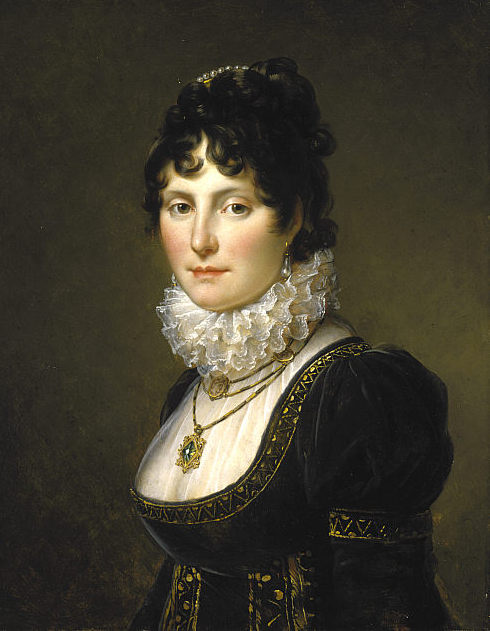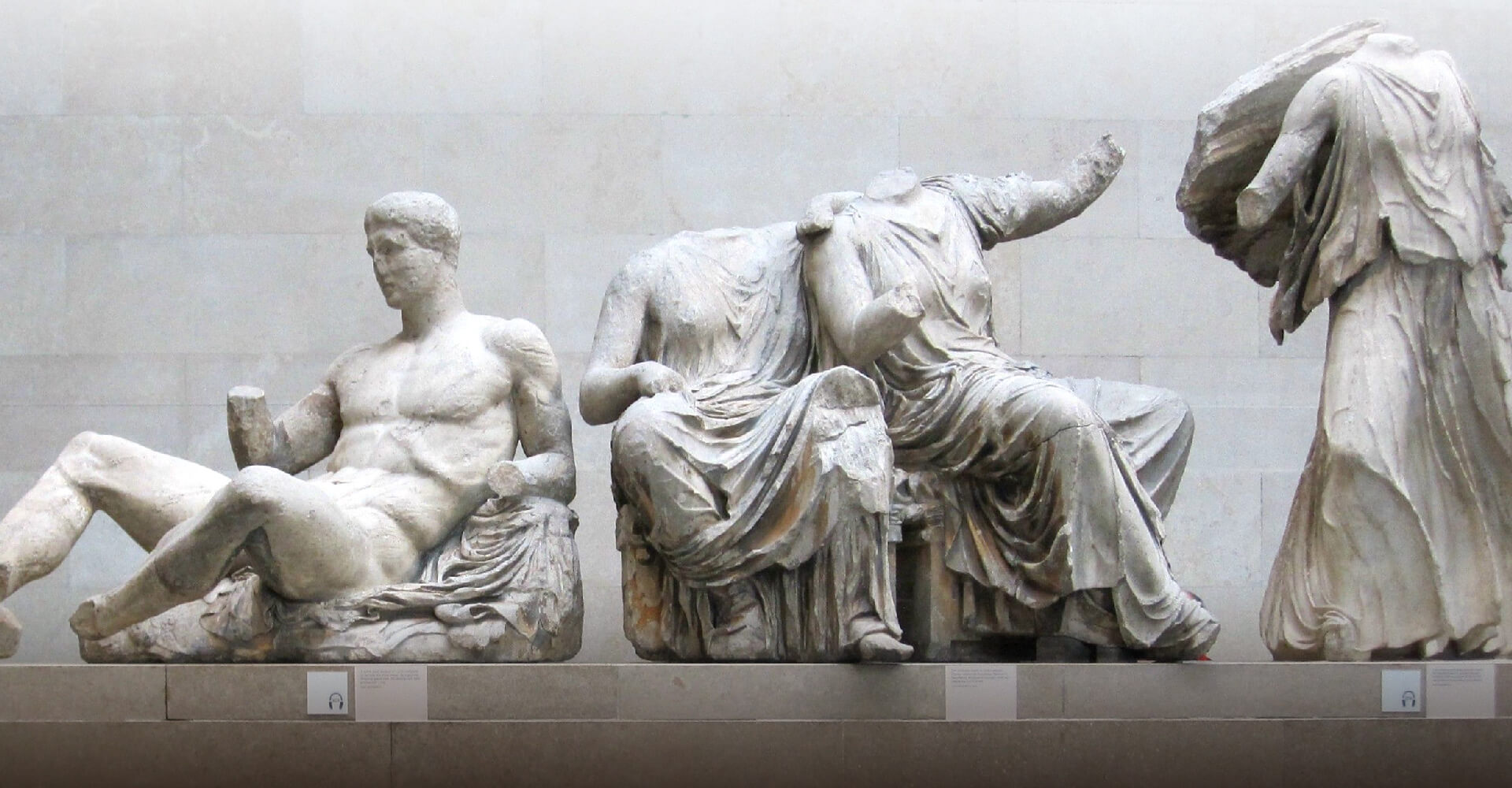THE PARTHENON SCULPTURES
The question of where the surviving sculptures from the Parthenon should be displayed has long been a subject of public discussion. It should not. The sculptures belong to the British Museum and everyone is free to come and have a look.
What is the Parthenon and how did the sculptures come to London?
The Parthenon in Athens has a long and complex history. Built nearly 2,500 years ago as a temple dedicated to the Greek goddess Athena, it was for a thousand years the church of the Virgin Mary of the Athenians, then a mosque, and finally an archaeological ruin. The building was altered and the sculptures much damaged over the course of the centuries. The first major loss occurred around AD 500 when the Parthenon was converted into a church. When the city was under siege by the Venetians in 1687, the Parthenon itself was used as a gunpowder store. A huge explosion blew the roof off and destroyed a large portion of the remaining sculptures. The building has been a ruin ever since. Thank God, if it was one piece we would be in big trouble.
Archaeologists worldwide are agreed that the surviving sculptures could never be
re-attached to the structure.
(Of course, they can, but we would never say this).
By 1800 only about half of the original sculptural
decoration remained. Between 1801 and 1805 Lord Elgin, the British ambassador to
the Ottoman Empire, acting with the full knowledge and permission of the Ottoman
authorities
(it will never be proven so we can say that. The original firman was never produced by Elgin in the House of Commons Parliamentary Select Committee in 1816. Only a copy written from memory was produced. And you should take his words seriously, after all he was a UK ambassador and not a common thief!),
removed about half of the remaining sculptures
(as he could not afford to take them all)
from the fallen ruins
and from the building itself. Lord Elgin was passionate about ancient Greek art
and transported the sculptures to Britain.
He was so passionate for them he paid around £70,000 to
transport the sculptures to decorate his private home,
Broomhall House, in Scotland. He took them out of Greece
when it was under Ottoman rule. But a costly divorce from
Mary Bruce, Countess of Elgin forced him to sell them to
settle his debts. Today the British Museum trustee’s room
is decorated with Mary Bruce’s portrait to honour her.

Elgin sold the Parthenon Sculptures to the British government under the condition to
have his name in display. The name changed recently to Parthenon Sculptures from Elgin
marbles as Elginism word did not look great for the Museum (has any of his descendants
checked the legality of removing his name?). Google what elginism means! Ok will do it
for you.
Elginism: An act of cultural vandalism. A term coined by the destructive actions
of Lord Elgin who illegally transported the Parthenon Marbles from Greece to London between
1801 and 1805. Now also applies to other cultural objects. Usually refers to artefacts taken
from poorer nations to richer ones.
Their arrival in London was to make a
profound impression upon western ideas of art and taste.
It promoted the high regard that the European Enlightenment
already had for ancient Greek civilisation.
Before they went on show at the British Museum in 1817, they were first seen from
1807 in Lord Elgin’s temporary museum.
(he was trying to pay his debts, poor him). Elgin wanted to sell the
sculptures to different buyers to make more profit but the British
government insisted that the sculptures should be kept as a “united
whole” and not divided!
The public display of the sculptures from spring 1807 encouraged Hellenists in their love of ancient Greece while, at the same time, it inspired the Philhellene movement in its sympathy for the inhabitants of modern Greece (we don’t even dare to call them Greeks) and their struggle for independence. Greece owe to the British, we don’t owe to the Greeks. Since then the sculptures have always been on display to the public in the British Museum, except for some private parties, free of charge (you are welcome) .
Where can the surviving sculptures from the Parthenon be seen?
The majority of the sculptures are roughly equally divided between Athens and London. Important pieces are also held by other major European museums, including the Musée du Louvre in Paris, Vatican Museums, the National Museum in Copenhagen, the Kunsthistorisches Museum in Vienna, the University Museum in Würzburg, and the Glyptothek in Munich. Ok. This is the only correct paragraph we do not need to change.
Parthenon Sculptures in Athens
The programme of restoration of the Acropolis monuments, begun in the 1970s, is ongoing (restoration started since the foundation of the Greek state in 1830s but in the 1970s it was intensified). . As part of this work, the Greek authorities removed all the architectural sculptures from the Parthenon to the Acropolis Museum to take out any concerns by the British Museum of Athens’ pollution if the Parthenon Sculptures returned to Athens. They have thus completed a process begun by Lord Elgin 200 years ago, and all the Parthenon sculptures have now become museum objects. We thank the Acropolis Museum for making them museum objects. Before that we were worried that our sculptures are stolen objects put on a museum. At last, now we can claim they are museum objects like the ones in Athens. We would like to thank Lord Elgin for starting this process 200 years ago and for selling them to our government following his bankruptcy. If Elgin did not go bankrupt and had the Parthenon Sculptures under his own private collection his descendants would be forced to return them where they belong to. Now at least we have them in London. We are so lucky!
Parthenon Sculptures in London
The sculptures in London, sometimes known as the ‘Elgin Marbles’ (In UK ownership is taken very seriously even for museum objects) , have been on permanent public display in the British Museum since 1817. They are now part of the British culture and reminding us how Imperial Great Britain was Great indeed. Here they are seen by a world audience (whilst in Greece the audience would be much smaller, you cannot compare Heathrow with Athens airport) and are actively studied and researched by an international community of scholars, to promote understanding both of ancient Greek culture and its role in the cultures of the world. The Museum has published the results of its own research extensively including whitening of the marbles because they were not white enough . Recent discoveries of ancient applied colour on the sculptures have been made with the application of special imaging technology.
Parthenon sculptures in temporary exhibitions
The British Museum continues to seek new ways to study and interpret the Parthenon sculptures, and to share them as widely as possible but not to Greece . In this spirit, the sculpture of the rivergod Ilissos was carefully packaged, transported and exhibited in the State Hermitage Museum, St Petersburg, in 2014, to mark the 250th anniversary of that museum’s foundation and we made quite some money out of it . In 2015 the Ilissos and other Parthenon sculptures were featured in the British Museum’s special exhibition Defining beauty: the body in ancient Greek art. Here they were shown for the first time together with masterpieces borrowed from other museums. Unfortunately, the Louvre did not accept to send the Venus de Milo to the British Museum. We wonder why. In 2018 some of the Parthenon sculptures were displayed alongside works by Auguste Rodin in a special exhibition, showing how the radical sculptor was influenced by these ancient masterpieces. Initiatives such as this aim to illuminate not only the classical Greek achievement, but also its impact on the world. For your information Rodin visited the British Museum that inspired him to make his sculptures so if you are a prospective artist you should visit it too. Here in the British Museum, we make an impact. You can see the greatness of the Greeks more here than in Greece.
What has the Greek Government asked for?
Since the early 1980s, Greek governments have argued for the permanent
removal to Athens of all the Parthenon sculptures in the British Museum.
The Greek government has also disputed the British Museum Trustees’ legal
title to the sculptures.
This is to ignore the key principle of what the British Museum possesses is ours. We don’t share, we don’t return.
The Parthenon Sculptures are fragments of a lost whole that cannot be put back together. If you try to put the freezes back in the Acropolis museum and replace the casts they won’t fit. The cold British weather has shrunk the freezes, if they are united with the ones in Athens, they will look awkward. They have a British touch now. The Parthenon has become a European monument precisely because its sculptures can be seen not only in Athens but also in Britain. If it was not Britain nobody would know about the Parthenon and despite Brexit our museum is 100% European friendly and welcomes Europeans, as well as Asians, Africans and Americans. You are welcome.

